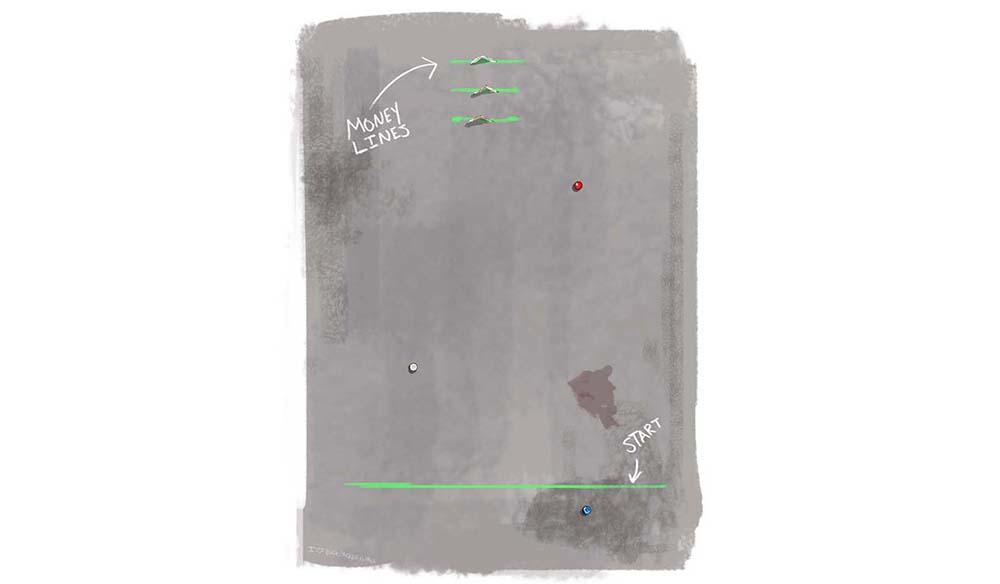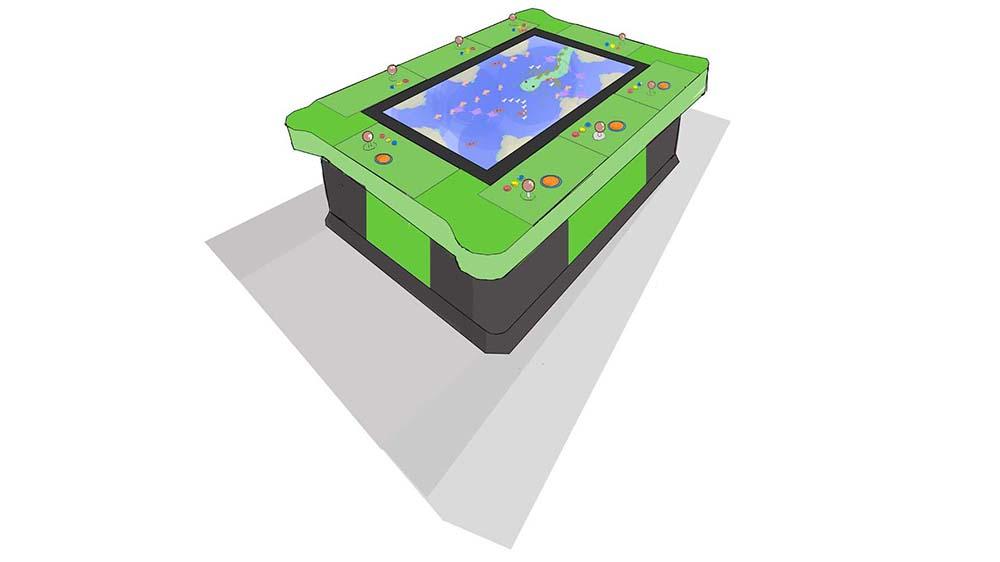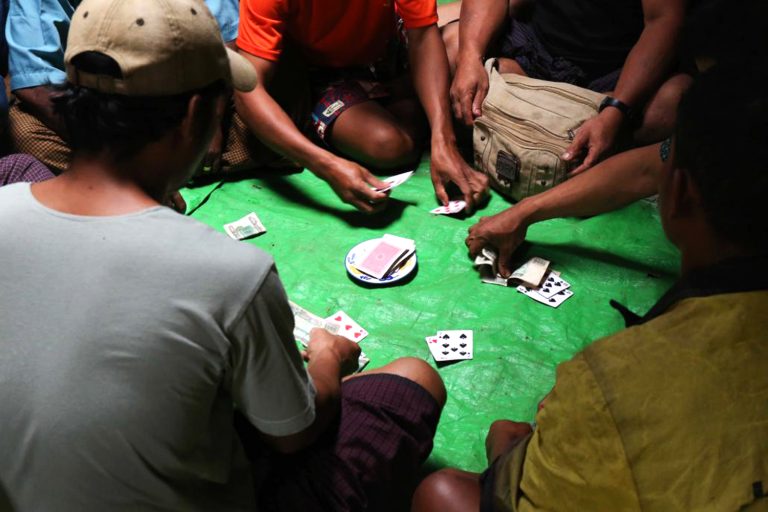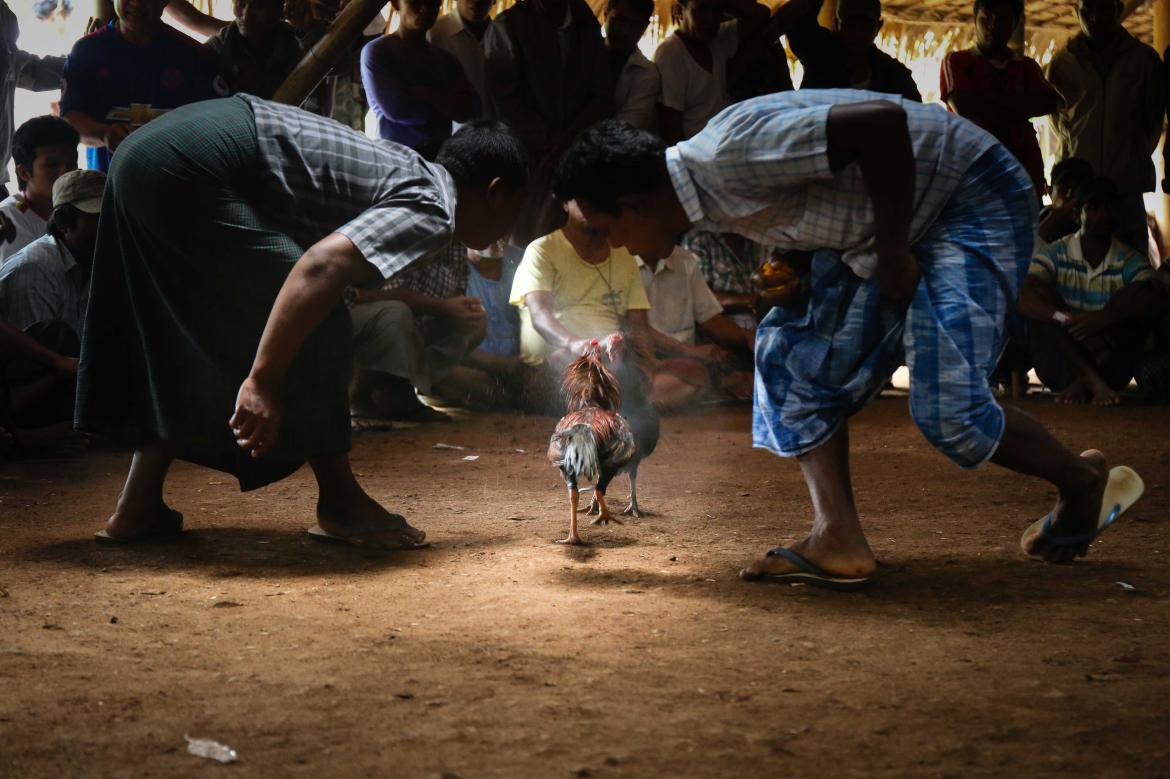In the second of a two-part series, we teach you three more games played on the streets of Myanmar.
By JARED DOWNING | FRONTIER
Nine Fire (Ko Mee)
Players: 2+
Materials: A standard deck of playing cards, money
Playing cards are illegal in Myanmar because they might be used for gambling. Thus, this gambling card game is simple, quick and easy to stash if the fuzz show up.
Support more independent journalism like this. Sign up to be a Frontier member.
To begin, players put a certain amount of money in the pot, which goes to whoever has the highest scoring hand at the end of the round.
The game begins by dealing two cards to each player. On a player’s turn, they may either request an additional card or pass. Each card is worth its number value. Aces are worth one point, and jacks, queens and kings are worth 10 points. A hand’s score is determined by how near the hand total is to the next multiple of ten. Whenever a hand’s total hits a multiple of 10, the score resets to zero. Thus, nine is the highest possible score.
For example, a hand containing a two, a three and an ace adds to six and is worth six points. But a hand containing a three, a four and a five adds to 12 and is only worth two points. A hand containing a jack, a queen and a give adds to 25, but it is only worth five points.
The strategy lies in deciding when to request another card (and risk going over a multiple of 10) and when to pass. The game is over when all players have either passed or are holding the hand limit of five cards.
In the event of a tie, the player holding the highest single card wins. If both players hold the same card, the winner is determined by the stronger suit. Spades is the strongest suit, followed by hearts, then diamonds and finally clubs.
Variants: If you join a game on the street or in a home, be ready to learn the house rules. Some versions have a hand limit of only three or four. In others, if the cards in the winning hand are all of the same suit, the player wins double the pot.

Illustration by Jared Downing | Frontier
Marbles (Pay thee)
Players: 2+
Materials: Marbles, small notes, chalk
As with any schoolyard game, there are as many variations of these rules as there are kids in Myanmar, so if you join in, get ready to learn some of the local nuances.
The goal is to hit currency notes – K100 or K200 – with marbles. The notes, one supplied by each player, are folded into wedges and arranged six inches apart in a straight line.
Players stand behind a line drawn about 12 steps back and take turns tossing, bouncing or rolling their marbles at the money. If a player hits a note, they get to keep it along with any notes that are closer to the player than the one that they hit.
For example, if you hit the second note in a line of five, you get to keep it and the note under it. But if you hit the very furthest note, you get to keep all five.
There are two rounds of shots, with players taking their second shot from wherever their marble landed on the previous shot. Players usually use their first shot to set up a better shot for the second rather than aiming for the money right away. If a player manages to hit another player’s marble (hopefully knocking it far afield), they get to shoot again immediately. If a marble falls beyond the furthest folded note, the player is knocked out of the game.
Before the start of the game, players stand beyond the money and shoot back towards the start line. Whoever’s marble lands closest to the line shoots first.

Illustration by Jared Downing | Frontier
Fish Game (aka Gold Fish, King of Treasures, Ocean King 3 Plus: Crab Avengers, and so on.)
Players: 1 to 8
Materials: Arcade machine, money
You can find these undersea-themed, pseudo gambling arcade games tucked away in beer stations, pool halls and the upper floors of video arcades, where parents whittle away small cash while their kids play downstairs.
There are lots of different versions, but they’re all basically the same: players (usually up to eight) sit around a large, table-style machine and use a joystick-guided blaster to shoot the fish swimming across the screen.
You start by buying points, typically using an in-house currency like arcade tokens. Each fish blasted earns more points, but each shot drains points. Thus, the object is to blast enough fish that your score increases faster than it decreases.
The fish are of various sizes, shapes and colours, and some are tougher than others. Players can boost the power of their blaster at the cost of more points per shot. The minimum blaster is fine for goldfish and guppies, but high-value targets like sharks, whales and even dragons require more firepower (that is to say, higher stakes).
In the end, players can redeem their points for in-house currency, which an independent broker can exchange for real money. Since it’s a system of loopholes and legal greys, the process varies from place to place and might require a little rapport-building before other players will reveal it.







